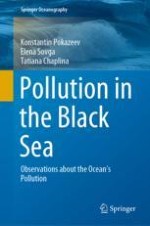2021 | OriginalPaper | Chapter
10. Modern Methods for Assessing the Self-cleaning Capacity of Marine Ecosystems in Shallow Waters of the Black Sea: Ports, Bays, Estuaries
Authors : Konstantin Pokazeev, Elena Sovga, Tatiana Chaplina
Published in: Pollution in the Black Sea
Publisher: Springer International Publishing
Activate our intelligent search to find suitable subject content or patents.
Select sections of text to find matching patents with Artificial Intelligence. powered by
Select sections of text to find additional relevant content using AI-assisted search. powered by
